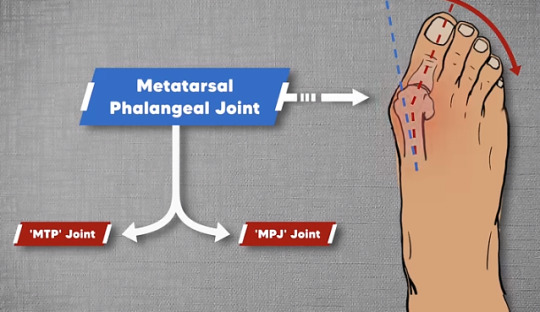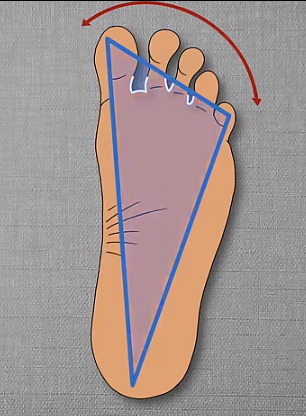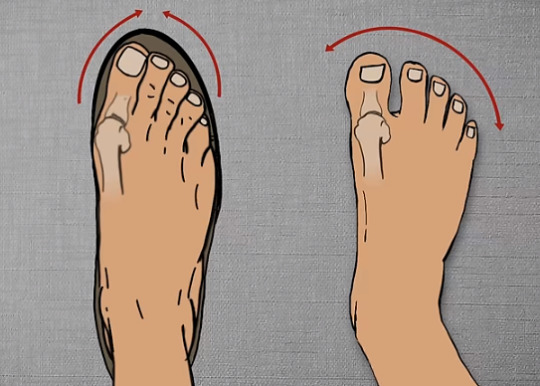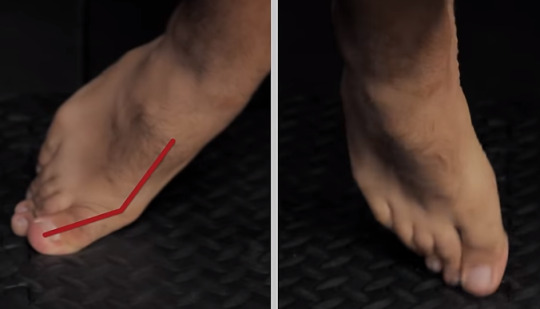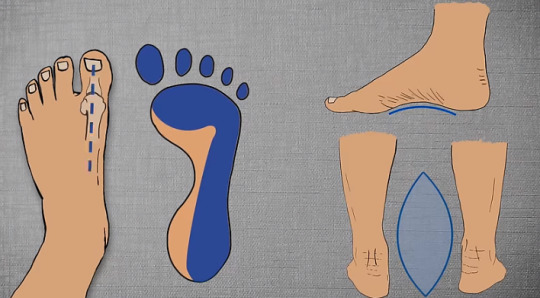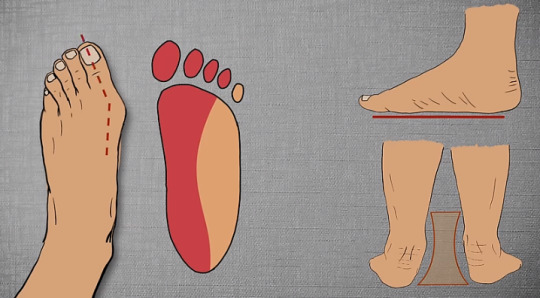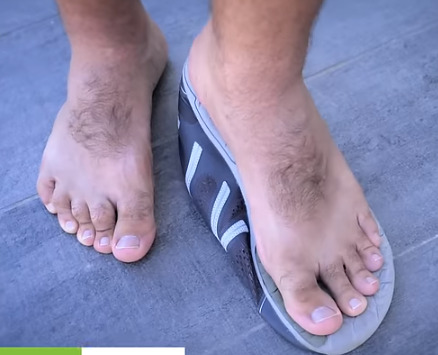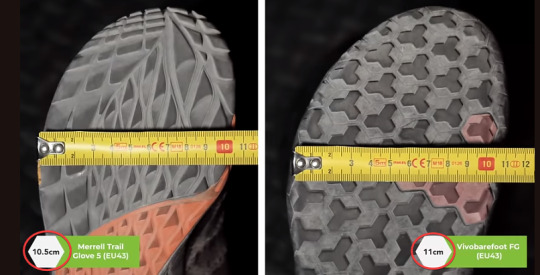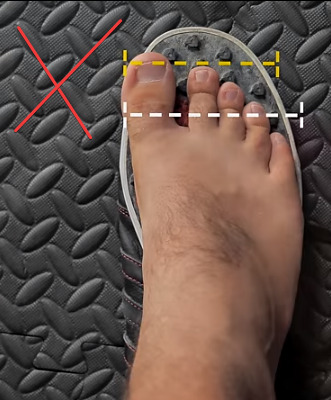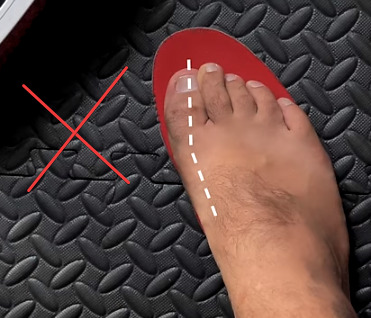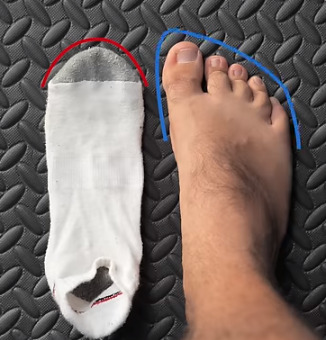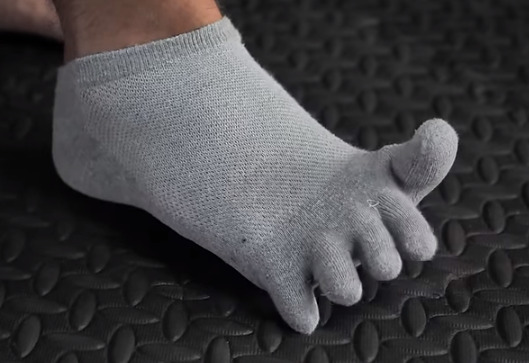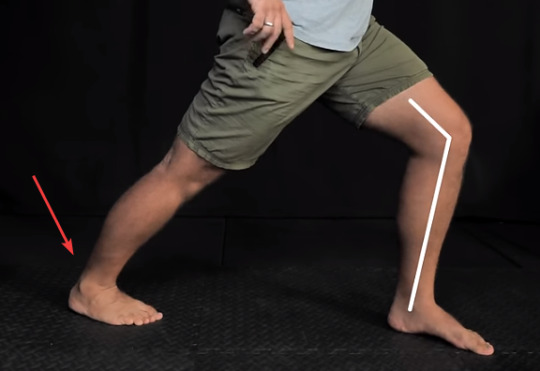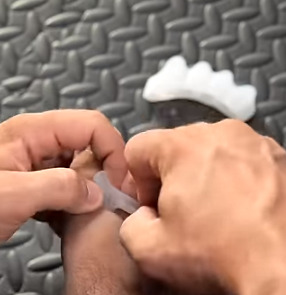#How to fix bunions in 5 steps
Explore tagged Tumblr posts
Text
#Treating Bunions Without Surgery#How Can I Shrink My Bunions Naturally?#How to Shrink Bunions Naturally?#Natural bunion treatment#How Do You Cure a Bunion Naturally?#How i cured my bunions naturally#How to fix bunions in 5 steps#How to shrink bunions naturally pinky toe#Can you pop a bunion back into place#Apple cider vinegar removes bunions
0 notes
Text
How to Build a Profitable Practice Without Spending a Lot of Money
Starting or scaling a healthcare practice doesn't have to come with a six-figure price tag. In fact, with the right strategies, it's entirely possible to build a profitable practice without overspending. Whether you're a physician, podiatrist, dentist, or other healthcare provider, smart budgeting and high-impact marketing can help you attract patients and grow sustainably.
In this article, we'll cover practical, cost-effective steps to grow your practice while keeping expenses low — without compromising on quality care.

1. Start Lean, Then Grow Strategically
One of the biggest mistakes new practitioners make is overspending too soon — renting large office spaces, buying top-of-the-line equipment, or hiring too many staff before generating consistent revenue.
Instead, consider:
Subleasing office space or sharing with another provider
Buying refurbished or gently used equipment
Outsourcing administrative tasks like billing and marketing before hiring in-house
By keeping your fixed costs low, you preserve more capital to invest in patient care and strategic growth.
2. Focus on Niche Services to Stand Out
You don’t need to serve everyone to be successful. In fact, niching down is one of the most effective ways to build a loyal patient base and generate referrals.
Ask yourself:
What do I do better or differently than others?
Are there underserved patient groups in my area?
What specific treatments are in high demand?
By positioning yourself as a specialist in a niche service (e.g., diabetic foot care, minimally invasive bunion surgery, pediatric podiatry), you can command higher value without competing solely on price.
3. Leverage Low-Cost Digital Marketing
You don’t need a big advertising budget to attract patients online. Here are some high-ROI digital strategies:
Optimize Your Website for SEO
Ensure your website is:
Mobile-friendly
Fast-loading
Filled with relevant keywords like "foot pain treatment near me" or "affordable podiatry services"
Also, create helpful content like blog posts and FAQs — Google loves useful, relevant information.
Claim & Optimize Your Google Business Profile
This is one of the most powerful (and free) tools you have. Make sure your profile has:
Accurate business hours and contact info
High-quality photos
Positive patient reviews
Regular posts or updates
Be Active on Social Media
Platforms like Instagram or Facebook can build trust and humanize your brand. Post:
Behind-the-scenes content
Patient success stories (with permission)
Educational tips or short videos
4. Encourage and Leverage Patient Reviews
Online reviews are digital word-of-mouth. They increase your visibility on platforms like Google, Yelp, and Healthgrades.
Ask satisfied patients to leave reviews
Make it easy — send a follow-up email or provide a QR code in your office
Respond professionally to all reviews, both positive and negative
Pro tip: Reviews improve local SEO, helping you rank higher in search results.
5. Build Strong Referral Relationships
Referrals don’t always require expensive lunches or marketing materials. Instead:
Reach out personally to local providers, PTs, or specialists
Offer to co-manage care or provide fast consults
Send thoughtful thank-you notes for referrals
A few solid referral relationships can drive consistent growth without any marketing budget.
6. Use Technology to Save Time and Money
Today’s software tools can automate many time-consuming tasks:
Online scheduling (reduces missed calls and improves patient experience)
Electronic health records (EHRs) with built-in billing tools
Telehealth platforms for follow-ups and low-complexity visits
Many of these tools offer affordable monthly plans, and they pay for themselves quickly through increased efficiency.
7. Track Your Numbers and Adjust
Profitability isn’t just about income — it’s about margins. Track key metrics regularly:
Cost per patient
Patient retention rate
No-show rate
Referral sources
Use this data to make smart, budget-conscious decisions about what’s working and what’s not.
Final Thoughts: Profitability Doesn’t Mean Overspending
You don’t need the fanciest office, biggest staff, or largest ad budget to build a thriving practice. By staying focused, delivering excellent patient care, and using smart, low-cost marketing strategies, you can create a profitable and sustainable practice — one that grows with your values, not just your expenses.
0 notes
Text
5 Signs You’re Wearing the Wrong Shoes—and How to Fix It
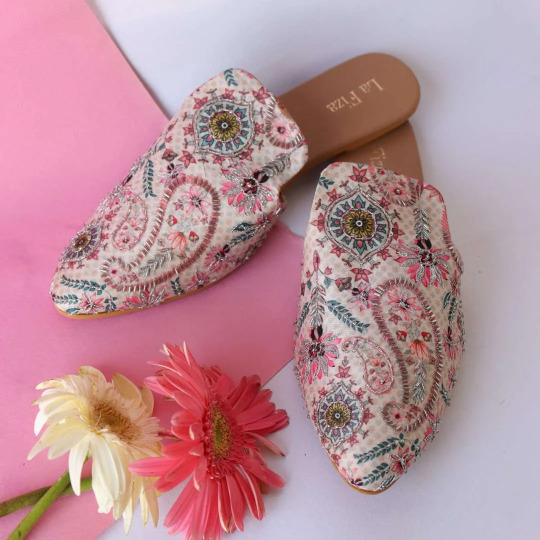
Your choice of footwear can make or break your day—and sometimes even your health. Wearing the wrong shoes not only leads to discomfort but can also have long-term effects on your posture, mobility, and overall well-being. But how do you know if your shoes are to blame? Here are five tell-tale signs you’re wearing the wrong shoes and tips on how to fix the problem.
1. Persistent Foot Pain
One of the most obvious signs that your shoes aren’t the right fit is constant foot pain. Whether it’s sharp aches in your arch, sore toes, or pain in the heel, discomfort that lingers after removing your shoes indicates a problem. This can result from poor arch support, cramped toe boxes, or shoes that are too tight or loose.
How to Fix It:
Opt for shoes with adequate arch support tailored to your foot type.
Choose styles with a rounded toe box to give your toes room to breathe.
Use orthotic insoles for additional support and cushioning.
2. Blisters and Calluses
If you frequently develop blisters, calluses, or corns, your shoes might be rubbing against your skin in all the wrong ways. Ill-fitting footwear—whether too tight, too loose, or made from rough materials—can lead to these painful skin issues.
How to Fix It:
Ensure your shoes are the correct size. Always measure your feet before purchasing.
Break in new shoes gradually by wearing them for short periods initially.
Use blister pads or moleskin to reduce friction in problem areas.
3. Uneven Shoe Wear
Take a close look at the soles of your shoes. If the wear is uneven—for example, more on the inside or outside edges—it’s a sign your gait is uneven. This can be caused by poorly designed or unsupportive footwear, leading to strain on your feet, ankles, knees, and even hips.
How to Fix It:
Consult a podiatrist to evaluate your gait and recommend supportive footwear.
Consider custom orthotics to correct alignment issues.
Replace worn-out shoes promptly to maintain proper support.
4. Chronic Back or Knee Pain
Believe it or not, your shoes might be the hidden culprit behind your chronic back or knee pain. Footwear that lacks proper cushioning, arch support, or shock absorption can affect your posture, placing strain on your spine and joints.
How to Fix It:
Choose shoes with cushioned soles and good shock absorption.
Avoid wearing high heels for prolonged periods; opt for wedges or block heels if needed.
Invest in ergonomic footwear designed to reduce stress on your back and knees.
5. Difficulty Walking Comfortably
If you find yourself struggling to walk comfortably—whether due to stiffness, imbalance, or instability—your shoes are likely hindering your natural stride. This could be a result of worn-out soles, incorrect sizing, or unsuitable shoe types for your activity.
How to Fix It:
Select footwear designed specifically for the activity you’re engaging in, such as running shoes for jogging or walking shoes for daily use.
Replace shoes as soon as they show significant wear or lose cushioning.
Try different brands and styles to find the best fit for your foot shape.
Why Wearing the Right Shoes Matters?
Your feet are the foundation of your body, and wearing the right footwear can prevent a host of issues, from bunions to chronic joint pain. Proper shoes:
Enhance your posture and gait.
Reduce the risk of injuries and foot-related conditions.
Boost your confidence and comfort throughout the day.
Conclusion
The wrong shoes can impact more than just your feet—they can affect your overall health and daily comfort. By recognizing these signs and making informed choices, you can step into a world of better health and style. Remember, investing in the right footwear is investing in yourself. Explore brands like La Fiza for stylish yet supportive options that keep you looking and feeling your best.
Take the first step towards happier feet today!
0 notes
Text
Watch "How to Fix Bunions in 5 Steps" on YouTube
youtube
0 notes
Photo

New Post has been published on https://fitnesshealthyoga.com/9-signs-youre-wearing-the-wrong-size-running-shoe/
9 Signs You're Wearing the Wrong Size Running Shoe
If you’ve never been fitted at a running store, chances are you buy your sneakers solely based on how they look.
When it comes to strutting around the weight rack, it’s not a grave mistake. But walking or running in shoes that don’t fit quite right can cause serious harm.
“Overuse injuries include plantar fasciitis, Achilles tendinitis, stress fractures, bunions, corns, hammer toes, and tendonitis,” says Chris Carter, M.D., sports medicine physician at Andrews Sports Medicine & Orthopaedic Center in Birmingham, Alabama. And they’re not limited to your feet either.
You may be surprised to hear that the difference from Brooks to Asics to Nike is more than just aesthetics.
When Should You Really Replace Your Running Shoes?
“The beauty of having so many running shoes in the market is that we all have unique feet and we run and walk on them differently,” says Phil Anthony, run specialty channel manager at running shoe brand 361 USA.
Fit is about more than just inches from your toes to your heel, he adds. Protruding toes, bulging sidewalls, and arch placement all play into not just how comfortable you feel on a run but your risk for injury.
So, how can you tell if you’re wearing the wrong running shoes? Look for these nine red flags.
1. You can’t get your shoes off without completely loosening the laces Fix: Go a size up. “You should be able to slide your feet out with your shoes laced up and untied,” Carter says.
2. Your heel slips when you’re walking or running uphill Fix: Lace your shoes up through the final eyelet to minimize slippage, Carter advises. There will be some heel movement, but it shouldn’t be uncomfortable. “Your heel should fit snug in your shoe, but not tight.” Use this guide to see if you’re lacing your shoes correctly.
3. Your toes graze the front of your shoe after a long run, your toenails are bruised, and/or you’ve developed Hammer Toe Fix: “Feet swell and lengthen over a run, so when you’re trying on a pair, make sure there’s a thumb’s width of space between your longest toe—which isn’t always the big toe—and the end of a shoe,” Carter says. “Your toes should also wiggle freely up and down.”
How to Find the Perfect Running Shoe for Your Stride
4. After a long run, your arches ache, your Achilles-tendon is tender, and/or you feel strain in your calves Fix: “An improperly aligned flex point can lead to arch pain or plantar fasciitis, while a lack of heel support and flexibility leads to Achilles-tendon or calf strain,” Carter says. The easiest way to measure your foot’s flex point is to use a Brannock Device (that sliding metal measuring tool they use at shoe stores). Then, find your shoe’s flex point. Hold the heel of your shoe as you press the tip into the floor. “The shoe should bend and crease along the same line your foot flexes, he confirms.
5. Numbness or strain on the top of your foot
Fix: This means the top of your shoe is either too tight or too loose on your foot, Anthony says. There should be no gaps or bagginess in the upper material when you’re laced up, he says says. “The upper material of the shoe should be snug but not too tight as to inhibit blood flow.”
6. You have bunions or corns on the side of your toes Fix: Your foot box is too wide for the pair you’re in. “If the shoe is too narrow, you’ll feel the base of your little toe sitting on the edge of the shoe last. Ideally, your foot should be able to move side-to-side in the shoe’s forefoot without crossing over the edge of the insole,” Carter says. When you’re trying on, you should be able to pinch a quarter inch of upper material along the widest part of your foot for an ideal fit.
Your Foot Problems—Solved!
7. Your toes burn after a run Fix: It’s called hot foot and happens when your shoes have too stiff a sole, Carter says. Find a pair with more cushion, he advises.
8. You feel a stabbing sensation in your knee while running in a new pair of shoes, especially downhill Fix: This is classic IT Band syndrome, where the tendon becomes inflamed and while there could be a lot of culprits, one is when your gait changes because of poorly fitting shoes, Carter says. There’s no one part of the fit that’s responsible here, so your best bet is getting fitted for a new pair at a running store.
9. If you feel a deep pain in your foot that gets worse when you’re active and doesn’t ease up after a few miles on a run Fix: “Stress fractures occur on the foot and ankle when muscles in these areas weaken from too much or too little use. Because of this, the feet and ankles lose support when walking or running from the impact of the ground,” says Carter. If your shoes don’t fit right, allowing the foot to move too much or not supporting the foot and ankle properly, the bones receive the full impact of each step. The stress on the feet causes cracks to form in the bones, thus causing stress fractures, he explains.
Help protect your lower body against injury with these strength-training exercises for your feet.
Source link
0 notes
Text
Scott Fish Bowl Strategy #SFB7
I'm in the Rafiki division this year, and I'd love to paint for you a picture of how it went and what I was thinking every step of the way. I seem to have employed a unique strategy, and I'll explain every bit of it. I also tweeted "Assante Samuel, Squashed Emmanuel" after one of my picks. Crickets. It's an NFL-themed ode to Rafiki. Right? Anyone? Okay, so if you are unfamiliar with Scott Fish Bowl or not up to date on what is going down this year, let me bring you up to speed. It is one mega-league consisting of sixty 12-team leagues... so 720 total teams. Most of them are owned by industry experts, pundits, and writers but there are is a healthy number of selected fans in there too. You can win your league and you can also win the whole thing out of 720. It's kind of crazy. For scoring, the big change is points for first downs instead of PPR. And bonus points to tight ends. The biggest thing strategically is that it is best ball scoring so the computer will assign your best lineup after the games are played each week and you'll get your maximum score. For rosters, there are 22 players but no trades and no waivers. So with a fixed roster and best ball scoring, the (held in July) draft is everything. Each week your top 11 players will score for you. No kickers or defenses. Your top 11 must include one quarterback, one tight end, two running backs, and three wide receivers. That's seven. The last four are flexes. One of those flex spots can be filled with any position, including quarterback ("superflex"). The other three can be any non-quarterback. My pick in the Rafiki league ("The Brain... has returned." Anyone?) was number eleven. That meant no David Johnson, LeVeon Bell, or Ezekiel Elliot. No Gronk (bonuses to TE's). No Aaron Rodgers since superflex makes quarterbacks so valuable... Pretty much every team will want to start two every week because QB's score the most points. (Even a bad QB will outscore a great RB most of the time.) Anyway, #11 also meant no Shady, Devonta, Melvin, Brady, or Antonio Brown. I'll get back to what I decided, but first... Let's talk strategy! QB: I want three of the top 18 quarterbacks. I see Joe Flacco at 18 and he had a million pass attempts last year and they added Jeremy Maclin... after Flacco I just don't trust any of those dudes. If I get three of the top 18 and they all have different bye weeks I'll always have two studs starting at QB and superflex. Plus, you know, injury insurance. This is a massive advantage which is why I listed it first. Lots of guys took two QB's early and a couple of guys, mysteriously, only took two total. Only one other drafter (in Rafiki) had the same strategy here - Derek Yoder from Fantasy Pros (shoutout... give him a follow @Derek_Yoder_FP). In fact Derek was even more aggressive than I was, going QB in rounds 2, 4, and 5. Might have been overkill, but the thinking is strong. TE: I'll talk about this second since the bonus points made this position buzzworthy. I think it was a little too much hype, though. I'm not sure bonus points on first downs will make those TE's in the #13-#24 range that much more valuable (if at all) than WR's in the #37-#48 range or RB's in the #25-#36 range. Incidentally, if you're wondering about those number ranges I'm using them because those are the top 12 'flex-ranked' at each position... With one TE, two RB's, and three WR's as mandatory starts, your top flexes will be in this range. It also shows you how scarce top options at RB and WR will be. Those mandatory starters need attention, as does the one TE here. My strategy is to get a dependable top 10 guy who looks like a reliable safety outlet for 1st downs for a young QB... and then wait until late to scoop some upside guys. I've got a few late picks in mind who give reason for optimism. WR: I want two studs and then to fill in that third spot and probably one or two flexes with some high quality tertiary options. I was surprised to see so many great WR's fell in the draft so regularly. More on who I picked in a minute. Even with two every week starters I felt like I still wanted to invest in three or four fill-in guys who provided really good upside. Remember, one of these guys must start alongside my two every-weekers and I'm also counting on one or two as flexes. I've got three regular flexes to fill. With my RB strategy (more in a moment) I expect to get one to pop each week and then start two WR's... or maybe a backup TE has a nice week instead. Options. RB: Okay, well, see... this is sorta where things get a little dicey. With the top six RB's off of the board I felt like I'd be reaching a bit at #11 and #14 if I went with the venerable RB-RB strategy (still my preference in most redraft leagues). I'd be taking Jay Ajayi and Todd Gurley. Or maybe Isaiah Crowell. Point is, I like those guys but I don't love them as my team's foundation. Also, I started thinking... Running backs get injured a lot. Backups are cheap. Also, many teams have a 1st and 2nd down back getting a bulk of the carries and then a 3rd down back catching passes for 1st downs... which means bonus points in SFB7. Also, a lot of those backup RB's are also the regular 3rd down option. Hmm... Maybe I could grab a whole bunch of these guys and let best ball scoring take it from there. I only need two to start each week. Usually those mid-round WR's will outscore mid-round RB's anyway... and with the way WR's are devalued here I should be able to get some I can count on. Kicker: Haha... just kidding. We don't need no stinkin' kickers. Putting it all together: Okay, #11 rolls around and I go Julio Jones. Even without Kyle Shanahan calling the offense I still see a guy in his prime with a great quarterback. And I'm not scared of Austin Hooper or Taylor Gabriel snagging too many of his first downs. People seem to be scared of his most recent foot surgery... but it was to remove a bunion. I don't worry about that. Looking at ADP, this was a bit of a reach... so we'll see... but Odell Beckham, Jr. at #14 was a steal. So, I get the #2 and #3 WR's in the whole league. Since I decided to go away from stud RB's and instead take my two WR's (and top two QB's... stay tuned) this was as great outcome. I did think about Drew Brees at #11 and I had hoped for Ajayi at #14... but I'm pretty happy with it. Ya gotta start three WR's each week so this is an exceptional foundation. I expect to go with four or five most of the time. And yeah, I went QB-QB with the next two. Kirk Cousins and Philip Rivers. I am not a Cousins fan but his production has been really good two years in a row and I really like the additions of Perine and Pryor. Rivers... well, who can argue? His track record is exceptional and his weapons are incredible. I also wonder what playing in a 30,000 seat soccer stadium will do for on-field communication, if anything. Can't be a negative. His draft value is suppressed for some reason, but I continue to like him. I had to address RB at #5.11 and I went with Carlos Hyde. Controversial pick, that. I don't love it myself and hoped to grab Joe Williams later but missed out. At #6.02 I got at TE that fit my strategy perfectly in Delanie Walker. I don't love Walker at age 32, but he fits what I'm doing just right. Good value on both of these guys, too. At this point I still feel naked at RB, I need my fill-in WR's to go with the big two, and I've got to invest in QB3 real soon. And it's 20 picks until I go again. Tick tock. Guys I considered start flying off the board... Christian McCaffrey, Paul Perkins, Eric Ebron (already?), Mark Ingram, Doug Martin, Dalvin Cook, Sammy Watkins, C.J. Anderson, Pryor, Spencer Ware... it's a bloodbath. Pick #11 has one advantage though... you can watch #12's roster and pick your #11 pick accordingly and take an educated risk on who will still be there for the even round #2 pick. So, I got my QB3 here in Flacco. Some might say it's a reach but my strategy was to lock down a top 18 QB as my QB3 and I knew I had to invest. On the comeback I get Ameer Abdullah at #8.02. Ugh. RB is a wasteland... maybe the other teams will stop drafting them? Hey, maybe! Only three RB's go off in the next 20 picks. Including Derrick Henry and Bilal Powell... I might have drafted them. We also lost out on David Njoku who I was hoping to get later. So, at #9.11 I got Samaje Perine which I see as excellent value for an RB3. At this point I still need a whole bunch of RB's... but I feel great at QB and at TE plus I've got my ultra-stud WR1 and WR2. Another RB is a good idea but I'm going to start 4-5 WR's most weeks... and they can't slip forever... and I really like Stefon Diggs... and he's great value... and the next best RB is Danny Woodhead or Matt Forte... so, okay... Diggs at #10.02. Not a whole lot of damage in the next 20 picks... We lose out on Garcon and Kareem Hunt, but overall it's not too bad. With #11.11 and #12.02 I grab Duke Johnson and C.J. Prosise who fit my 3rd down running back + backup starter strategy pretty well. Okay, well, Duke for sure. People hate the Browns but that o-line is amazing. And they'll be facing a ton of 3rd-and-7 type of situations. With Prosise, he does have two guys in front of him but he did pretty well as a rookie and he'll be the 3rd down guy most of the time. Good value here I think... especially at RB4 and RB5. I'm starting to build a stable of guys who could pop any given Sunday. I'm thinking I'll start three each week (well, between the minimum of two and probable max of four). I'm thinking that the flexes will usually be one RB and two WR's with room for upside RB's and TE's. Okay, 20 more picks... waiting... waiting... John Brown, Joe Williams, Quincy Enunwa... not too bad. Though it does show how thin the talent pool is getting. I seriously considered Brown over Prosise but figured there were a lot of WR's in this tier and Prosise has some upside any given week. I looked at the #12 roster (Alec Snyder from Fantasy Jocks - @FantasyJocks) and saw that he didn't have any TE's yet. I feel pretty solid with Walker, but I remember from my research in writing the Buffalo Bills preview for the RotoWire magazine that Charles Clay really turned it on late last year and the Bills are very thin at the 'pass-catcher' positions. Look at his game logs... In weeks 15 and 16 combined he had 15 receptions for 157 yards and three scores. Both of those weeks would have made it into my flex spot, so at #13.11 he provides good TE insurance and potential for flex-worthy weeks. I may have sniped Alec here, too... since he went with back-to-back TE's with the next two picks. At #14.02 I took Kenny Britt. He's big, fast, is a #1 WR, and went over 1,000 yards last year in an arguably worse situation. At #14.02? Yes, please. So, I've got my WR4 (finally) and one who sets a pretty solid floor as a probable starter. In the 14th round. Not bad! People really hate the Browns, but do you remember how good Pryor was last year? I just went two more rounds without adding to my group of RB's though.... which isn't great. I thought the pick of Clay was justified and Britt as my WR4 in the 14th is fantastic. If I'm going to count on my WR depth I can't wait forever... but what havoc will happen at RB over the next 20 picks? Jonathan Williams, Thomas Rawls, Marlon Mack... some good ones went down. I wanted Mack. I settled for DeAndre Washington at #15.11. He fits my strategy pretty well, especially if he can out-snap Jalen Richard this year. Oakland has an amazing o-line so this is a nice get for RB6. He could pop a flex-worthy week at any time. At #16.02 I get Zay Jones. Okay, so back to that thin Buffalo receiving corps... Jones is just a rookie but he led the NCAA in receptions last year and he's really just battling injury-prone Sammy Watkins for targets. And, say what you want about Tyrod Taylor, but he's at least competent and he's behind a solid o-line. I'm willing to bet he looks Jones' way quite often this year. Not a bad WR5, especially in the 16th round. My next two picks were risk/reward plays in Giovanni Bernard and Allen Hurns. Gio has to get healthy but he has obvious upside. Hurns needs to bounce back from a down year but he was really good in 2015. Upside. The big thing here is that I can see either one of them getting a flex start for me at some point. I would actually prefer to see Gio start the season on the PUP, come back fully healthy, and perform like Gio in the second half. At #19.11 and #20.02 I took TE3 and TE4, both with some upside. Jermaine Gresham and Vance McDonald. And, really, with all of the emphasis on TE's I'm pretty surprised to see them still around this late. Both got sizable contracts in the off-season (especially Gresham) and both have undeniable talent. Gresham, like Clay, was really good down the stretch last year and is still reasonably young. The Cards don't like throwing to the TE, but they changed course a bit late last year, paid big to keep him around, and it is possible that Carson Palmer will regularly look to him at the 1st down marker. It is rumored that McDonald might not make the final 53, but with his contract I don't buy it. In real-life football, he's actually one of Brian Hoyer's best options. Certainly he is a big target for first downs, even if they will be scarce for the Niners. With my last two picks I wanted RB's that have some sort of story that could put them in a position to get touches. Orleans Darkwa is behind Paul Perkins plus rookie Wayne Gallman, but he's been running with the 1's in OTA's. The coach has had nice things to say. So, I think he's worth a flier in round 21. Andre Ellington in round 22 is interesting too... He's largely failed as an RB so far in his career and they tried moving him to WR, but they ended that experiment and Ellington is still listed at #2 on the depth chart behind David Johnson. Does he get the #1 job in the event of an injury? Will he see action on 3rd downs? It's a good gamble in the final round. The bottom line with these late-late-round guys is that I can see a situation where they have a flex-worthy week for me. Post-mortem: Okay, the RB's are scary... but I did what I had to do. I couldn't grab a super-stud so I took nine guys who all have a chance to pop at any time. My favorites are Perine and Duke Johnson... though I did start with a couple of interesting picks in Hyde and Abdullah. This is unquestionably my Achilles heel, but I did grab nine guys so maybe in a best ball format the bulk of options will make up for the lack of quality on top. I only require two per week. I'm set at quarterback, including bye weeks and the occasional down week by any of the three. Cousins is a top fantasy QB, but if (when) he has one of those 227 yards, 1 TD, 1 INT types of games the computer will just best-ball-plug-in both Rivers and Flacco at QB and superflex. This is a huge advantage. At WR I'll start Julio and ODB every week and then one of Diggs, Britt, Jones, or Hurns. Should be okay. At TE I'm set with Walker but in case of a down week I get Clay or Gresham who both showed signs of studliness last season. For my three non-super-flexes it's likely to be some combination of Britt, Jones, Perine, and Duke Johnson with the occasional pop from Prosise, Washington, Hurns, Clay, or Gresham. I have a bulk of guys with defensible narratives that show a path to flex-worthiness. I avoided handcuffs and guys with difficult paths to playing time, especially rookies or big injury risks (with the exception of a super late gamble on Gio). I feel like this is a flexible lineup that can weather injury storms and has enough upside depth to keep me chugging along through 16 weeks. via Blogger http://ift.tt/2tjvUiA
0 notes
Link
Wearing high heels can take a serious toll on your feet.
Though heels often aren't the most comfortable footwear option you have available to you, there are plenty of times when no other style will do.
Knowing some of the potential effects you're risking when you wear high heels, especially over longer periods of time, and how to potentially ward off some of those effects can help you take of yourself and your feet.
High heels aren't often considered to be the most comfortable shoes in your closet, but sometimes you need or want to wear them. You're likely intimately familiar with the pain and blisters that can (and often do) come along with wearing high heels, but you might not realize that your shoe choice can have a real effect on you beyond just the temporary pain associated with squeezing your feet into the shoes.
If you're going to wear high heels, you need to know not only what sorts of things your choice of shoes might be causing, but also how to help address those issues.
1. You could injure an ankle or end up with stress fractures.
Even if you only have your shoes on for a minute or two, you could potentially hurt yourself.
"[Y]ou could've just put on the shoe and headed out, literally take one step and step on a pebble, and then turn your foot inward and then either strain or break the ligament structures around what we call the lateral side of the ankle — so the outer part of the ankle — and it's called a lateral ankle sprain," Dr. Yolanda Ragland, a podiatrist and the founder of Fix Your Feet, told INSIDER.
You don't have to spend a long time in your heels in order to feel the effects. Though this type of injury probably isn't the very worst thing in the world, it's undoubtedly painful and healing takes time (and sometimes some effort). An injury like this one is a potential for anyone who wears high heels for even a minute or two, but can be especially risky for people who wear heels only seldomly.
"[I]f you aren't use to wearing heels most people are at a greater risk of an injury like an ankle sprain because the stabilizing muscles of the feet, ankles, and lower leg that protect us aren't strong enough to balance our body in very different gait," Matt Ferguson, the co-founder and president of Progressive Health Innovations Inc., told INSIDER.
Practicing walking in heels — and learning how to do it — might not sound as silly know as it may have before.
2. Arthritis is a real concern.
Ragland said that the joints in your knees or further down into your foot can become arthritic if you wear heels too much because the way that you're compensating while standing or walking can cause the cartilage in these joints to wear down. That's something that you might not consider all that often when determining what sort of shoes to wear or how often to wear high heels, but it's something to keep in mind.
3. You could make existing foot problems worse.
If you already have things like hammer toes, ingrown toenails, corns, bunions, and more, you might notice that wearing high heels can make those things worse.
"[I]f you have bunions or hammer toes, wearing high heels can exacerbate those problems," Ragland said. She added that bunions can grow and become painful more quickly when you're wearing heels versus if you're primarily sticking to flats.
Not only that, but you also might notice a bump form (or become a bit worse) on your heels.
"[Y]ou can get a bump that forms because the shoe is rubbing on the back of the heel, which is the calcaneus, and your Achilles tendon inserts into that area, so what happens is that, because you are shortening the Achilles tendon while you are in heels — so it's kind of like it's giving a little bit of relief of strain on the Achilles tendon, but it's also bad at the same time because now it's leaving that bone vulnerable — and you can get a bump on the side and the layman's term is called 'pump bump' and we call it, in medical terms it's called a haglund deformity," Ragland explained.
4. You could experience pain in your body beyond your feet.
Wearing high heels doesn't just affect your feet, but it can make things uncomfortable elsewhere in your body as well.
"Prolonged use of high heels don't just put you at risk of injury while wearing them, you can also be at a greater risk of injury when you are not wearing them due to your body's ability to adapt," Ferguson said. "Look at the studies and you'll see that heels have been linked to significant problems such as plantar fasciitis, Achilles tendinopathies, calf issues, chronic knee pain, hamstring issues, hip problems, and back pain."
This is at least partially because of the way you carry yourself when wearing heels, which is different than the way you carry yourself when you're wearing flats.
"A few key changes occur in the body to accommodate the shift in gravity when high heels are worn regularly," Amy Kreydin, NBCR, CCAP, BD, a board-certified reflexologist, told INSIDER. "We see the muscles and tendons in the legs shorten, the pelvis tilts forward, the curve of the lower back becomes exaggerated, and the upper body leans backward. In my practice, the long-term effects of high heels contribute to back pain, dysregulation in the digestive tract, neck pain, headaches, knee pain, and inflammation in the shortened tendons of legs and buttocks."
5. You walk differently.
Because you carry yourself differently when you wear high heels and your center of gravity changes, it makes sense that you might walk differently as well.
"Talk to practitioners and those of us who work in the area, and we're seeing that it's not just when people are wearing heels that problems can also occur," Ferguson explained. "If you wear them too long and too often, your muscles and tendons will adapt to you standing/moving differently, so there will be effects on the plantar fascia, Achilles, calf muscle, and hamstrings. Then, when you return to 'normal' shoes and a 'normal' gait (proper extension of the foot, Achilles, calf, and hamstring), that's when you get hit with an injury."
6. Your toenails can be affected too.
"So, a lot of times ladies come in and they think that they have a fungal nail because the nail looks dystrophic or it looks strange, it doesn't look like it did before," Ragland said. But what actually is happening is that your toenails are "traumatized" because of the contact with the high heels.
Beyond the way that high heels can make your nails look, they can also affect the way that they grow. Ingrown toenails are yet another potential hazard that can come with wearing high heels too much, especially if you're wearing heels with an exceptionally pointy toe, Ragland said.
7. You could end up with hammer toes.
"[W]earing shoes and having hammer toes at the same time will increase your chances of having corns on top of those hammer toes because again, the joint is bending, it's rubbing up against the shoe, the skin wants to protect itself, actually, it has two options: it can either protect itself and form a callus, which is the lesser of the two evils, or it can break down and ulcerate, so the wiser thing that your body does is form the calluses and that's where the corns come from hammer toes," Ragland explained.
You could still get hammer toes even if you don't wear heels, she said, but your chances of getting hammer toes or dealing with hyperextended toe joints and the potential for dislocated toes may be higher if you wear them.
There are some things that can be done to help prevent or care for these issues.
Luckily, you don't just have to live with it, nor do you have to eschew your favorite pair of heels. In fact, Ragland doesn't discourage patients from wearing heels.
"I think as long as you do things in moderation, you should be fine," Ragland said. "So I don't really discourage people from wearing heels, but I do encourage people to wear their shoes wisely."
That means not wearing them for too long of a period of time if it's not necessary, stashing a pair of flats in your bag to throw on when needed, and wearing a different pair of shoes while in transit, for example.
Ragland and Ferguson both recommended stretching, as well. Ragland said that everyone should be stretching every day, whether they wear heels or not. And Ferguson worked on a "strengthening and stretching program" that can be done to help offset some of these negative effects, which includes stretches that you do on the days you wear heels and others that you do on the days that you don't.
He also noted that it can be a good idea to take your heels off and add in a few stretches if you can during the day.
And Kreydin said that she recommends an Epsom salt soak when you wear them every so often and wearing different heel heights and reflexology when you wear them on a more everyday basis.
There are a ton of different techniques and tips that you can use to make wearing heels not only more comfortable, but also slightly less harsh on your body. Still, knowing what kinds of things you might be in for can help you prepare ahead of time and quickly react if something goes wrong.
Sign up here to get INSIDER's favorite stories straight to your inbox.
SEE ALSO: I wore high heels to work for two weeks straight and was shocked by what it did to my body
FOLLOW US: INSIDER is on Facebook
Join the conversation about this story »
NOW WATCH: All of these Lush products are package-free — and help reduce plastic waste
from Design http://bit.ly/2JPSZ04
0 notes
Text
YogaToes Gel Toe Stretcher and Separator Review
See YogaToes Gel Toe Stretcher and Separator Review in its original form on http://ift.tt/2jv9IZl or check it out below.
People experience foot pain for a variety of different reasons. If you’re dealing with it, you know how debilitating it can be. It’s easy to ignore the health of our feet until a problem occurs. Then, it becomes impossible to think about anything else.
There are plenty of pain relievers and treatments to help with foot pain. But, some people are hesitant to start using various pain medications, or become dependent on creams, gels, etc. A more natural solution is the [easyazon_link identifier="B004HE94SE" locale="US" tag="yellowtoenails-20"]YogaToes Gel Toe Stretcher and Separator[/easyazon_link].
You’ve undoubtedly heard of yoga for the rest of your body. Perhaps you’ve even done some distinct stretching and breathing in a yoga class of your own. Think about how relaxed and pain-free it made you feel. That concept carries through to your feet with YogaToes.
Gel toe stretchers are designed to spread and exercise your toes toward better health. They can help to treat and prevent a wide variety of different toe and foot problems with proper use.
In this article, we’ll review how YogaToes works, and how it can help with foot conditions. We will hold the product up to several different criteria, to determine where it stands out the most, and how you can benefit from it.
If you've arrived at this page with the intention of buying the YogaToes stretcher, [easyazon_link identifier="B004HE94SE" locale="US" tag="yellowtoenails-20"]CLICK HERE[/easyazon_link] to go straight through to the product page. You'll be able to find out the latest discounts and check current feedback from previous customers.
What Are Toe Stretchers?
Gel toe stretchers like YogaToes are rubbery gems designed to space toes apart from each other. It also keeps toes away from the ball of your foot and the top of your foot. They help to improve the overall alignment of your feet. This is done by stretching and working out the muscles that may have fallen out of alignment over time.
There are many foot conditions that are caused because of changes in the position of your feet and toes. Muscles and ligaments tighten as we use our feet every day, and it can end up causing pain and affect the way you walk.
YogaToes are made from a rubbery-like gel, and when placed between the toes, they help to increase flexibility and proper positioning. Toe stretchers are great for a variety of different foot problems, including:
Hammer toes
Bunions
Plantar fasciitis
Poor circulation in the feet
If you are active and exercise frequently, you may also experience problems with your toes as the muscles tense up. YogaToes will help to stretch and flex these muscles properly. So, if you do a lot of heavy aerobic activity, it can help to alleviate foot pain from overuse.
[easyazon_link identifier="B004HE94SE" locale="US" tag="yellowtoenails-20"]CLICK HERE[/easyazon_link] to Read Customer Reviews & Check Pricing Info on Amazon.com!
YogaToes GEMS Gel Toe Stretcher and Separator Review
YogaToes claims to provide instant therapeutic relief for a variety of different foot conditions. Not only does it help to get rid of foot and toe pain, but can help with unsightly conditions like bunions and hammertoes. You don’t have to be an athlete or an extremely active person to experience these foot problems. Everyone is susceptible to them.
The problem with these foot conditions is that not only are they painful, but they can sometimes be visually embarrassing. Some can even be quite expensive to take care of if you seek out medical treatment. Quality gel toe stretchers change that by bringing a solution for foot problems into the home.
Can [easyazon_link identifier="B004HE94SE" locale="US" tag="yellowtoenails-20"]YogaToes Gel Toe Stretcher and Separator[/easyazon_link] really help to alleviate these conditions? Let’s take a closer look at a few of its qualities and how they can benefit you.
Are They Easy to Wear?
The YogaToes GEMS are much like the original YogaToes, but easier to slip on and off. This ease of use in wearing has made them more popular than ever. You don’t have to worry about painstakingly separating your toes - the device does it for you whenever you put it on. It’s still important to make sure each toe is properly in its place for the best results.
It’s recommended that you are either sitting or lying down when wearing the toe stretchers. This ensures that the stretcher can do its job properly, and your muscles aren’t fighting against it by walking, etc.
It may take some getting used to at first. Most of us don’t regularly keep things between our toes. So, it is recommended to start out wearing the separators for 10 to 15 minutes a day, and gradually increasing the time. This gradual increase makes them easy to conform to. Eventually, you should find they are so comfortable you can wear them for up to an hour.
How Effective Are They?
Not only do YogaToes help with conditions like Plantar fasciitis and hammertoes, they help with a variety of other problems associated with feet and toes. Some of these issues include:
Varicose veins
Cramping and stiffness
Arthritis
They can also help with circulation, improved balance and posture, and can help with the appearance of your toes. With so many positive reviews to back them up, it’s clear they are incredibly effective at what they do.
These stretchers are designed to provide instant relief if you’re feeling any pain in your feet and toes. For more severe conditions, it could take several days to several weeks of consistent wearing to see physical changes. But, you should notice an improvement in your comfort level right away.
Are They Safe to Use?
Because there are no creams, ointments, or pain medications to worry about, gel toe stretchers are very safe to use. Made of a safe, comfortable gel material, there is very little that could go wrong when using them correctly.
You may experience some slight discomfort upon using them the first few times. Gradually increasing the time spent wearing them will help that discomfort to go away. Additionally, you can place them in the freezer for several minutes before putting them on. This will help to soothe aching feet while stretching the muscles of your toes.
If you continue to feel any pain or discomfort while using the separators, make sure you’re wearing them correctly. Try to get them as close to the natural webbing of your toes as possible. Avoid walking or running while wearing the separators.
Are They Affordable?
YogaToes are slightly more expensive than some competitors on the market. However, they are also the most popular because of how well they work and how long they last. There are imitators that can be purchased for a cheaper price. But, they may be more prone to break, or may simply not work as well.
These gel toe stretchers come in pairs, so you do receive two for your total purchase cost. They are designed to last, so they don’t need to be replaced often. They won’t lose their shape over time, either. If you’re someone who deals with foot pain or toe problems on a regular basis, they are a worthwhile investment.
A Step-by-Step Guide to Wearing YogaToes GEMS
Wearing toe stretchers like YogaToes is incredibly easy. They are designed to be used in moments of relaxation: When you’re sitting, lying down, or even relaxing in a bath, sauna, etc. To use correctly, complete the following steps each time:
Moisten the stretchers a bit before using them. This will help them to slip onto your toes easily.
Find a place to either sit or lay down for the duration of wearing the stretchers. Don’t attempt to perform any type of physical activity while wearing. It will counteract the way your muscles are being worked.
Slide each toe into the stretchers, starting with the big toe first. Work through each toe until it is securely in place and comfortable.
YogaToes are designed to sit close to the webbing of your feet. However, if you’re experiencing discomfort when you first use them, you can start them higher. Gradually slide them closer to the webbing as you get comfortable.
Start off by wearing the separators for 10-15 minutes a day, during a time of relaxation.
Work your way up to wearing for one hour a day for best results.
Will YogaToes Gel Toe Stretcher and Separator Work for Me?
People experience foot pain and conditions for a variety of different reasons. More often than not, it’s our lifestyles that lead to things like bunions, aching toes, etc. While there are changes you can make to improve those problems, using a gel toe stretcher like YogaToes can help to alleviate pain and discomfort almost immediately.
If you’ve taken a yoga class before, think of this product as the same solution for foot problems. Some safe stretching and relaxation can help to put things back into alignment. This can fix a myriad of different foot issues in a short amount of time. What’s the best part? There are no messy medications to worry about.
We hope this review of YogaToes has been helpful for you, especially if you’re struggling with pain or an unsightly foot/toe condition. In just a few minutes a day, you can stretch and strengthen your toes back to health. Plus, you’ll feel relaxed and revived while doing so. If you’re looking for a product with no negative side effects and countless success stories, you’ll love using YogaToes.
Check the Price of [easyazon_link identifier="B004HE94SE" locale="US" tag="yellowtoenails-20"]YogaToes Gel Toe Stretcher and Separator[/easyazon_link] on Amazon!
Our Verdict
[usrlist Effective:5 Comfort:5 Safety:5 Value:4 avg="true"]
0 notes
